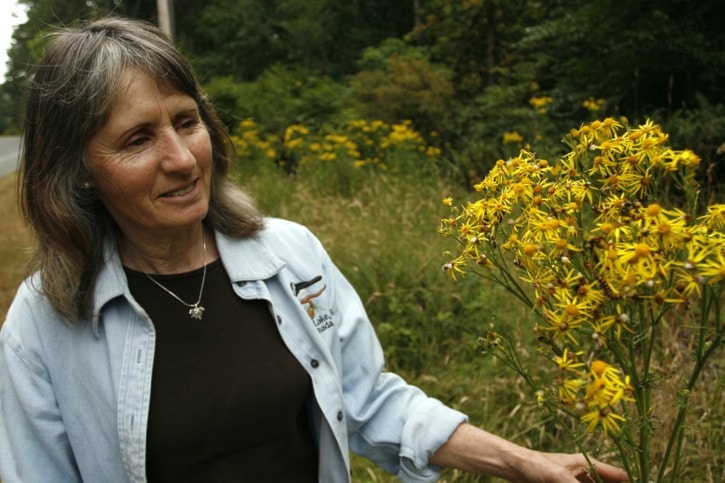Metchosin residents take on invasive plant harmful to farm animals
Scotch broom’s little yellow flowers aren’t the only eye-sores popping up along roadways and trails in Greater Victoria.
Tansy ragwort, an invasive plant in the sunflower family, is poisonous to horses and cows, and crowds out native species, but a few Metchosin residents are trying to keep it under control.
“Tansy ragwort likes open spaces. It likes the same areas that the broom likes,” said Kathy Atherton, a Metchosin resident who has been actively pulling the plant whenever she sees it. “It thrives on very little water.”
Atherton has been on the hunt for the tansy ragwort for about five years. Whenever she is trotting through Metchosin trails on her horse Reggie, she will stop and pull out the plant when she crosses its path.
“It’s a noxious weed on par with broom, but it’s easier to control,” Atherton said, explaining that once it’s pulled it’s less likely to grow back than other invasive plants.
The tansy ragwort regrowth in areas she tends is minimal compared to what it once was. Atherton doesn’t take all the credit — her neighbours and other Metchosin residents are taking action against the plant.
“Sometimes you will see a small plant on the side of the road. You should stop your car and pull it out while it’s still controllable,” she said.
As a horse owner, Atherton knows the plant is a danger to livestock.
Her animals have never become sick from eating the plant, but animals on southern Vancouver Island and the Fraser Valley have died from ingesting the plant.
The plant becomes toxic when mixed with liver enzymes, according the B.C. Ministry of Agriculture.
Once ingested it can lead to liver failure and even death. The flowers of the plant contain the majority of potential toxins.
Tansy ragwort isn’t a desirable food for animals, but they can mistakenly eat it while munching on grass. It can be dangerous when it grows in pastures where it can get mixed in animal feed such as hay.
Removing the tansy ragwort is easy, Atherton said as she dons gloves, grabs the thin stem and simply pulls it from the ground.
The ragwort bunch is crawling with caterpillar-like cinnibar moth larvae, the legacy of a 50-year federal government biological control program.
From 1962 and continuing to this day Agriculture Canada imports predators of tansy ragwort, including the cinnabar moth and tansy ragwort flea beetles.
While the patches of the plant don’t compare to roads lined with Scotch broom, Atherton says the tansy ragwort could become as dominant as broom if left to flourish.
“Every year in the late spring I think to myself that I should be putting posters around with pictures of the culprit.”
reporter@goldstreamgazette.com
